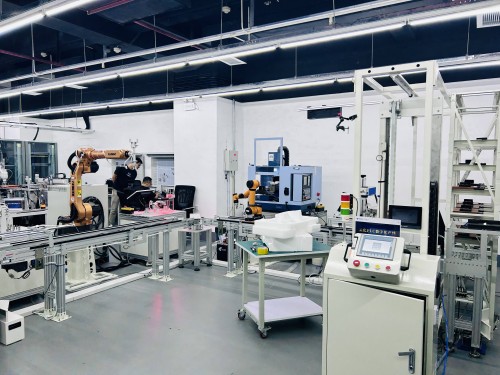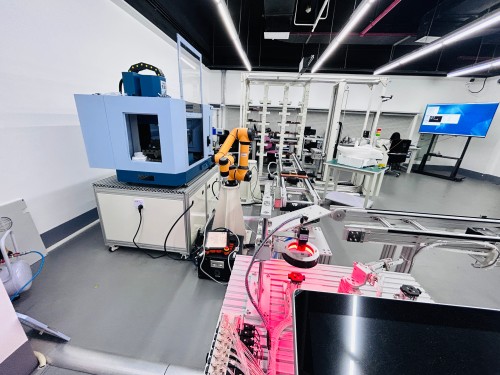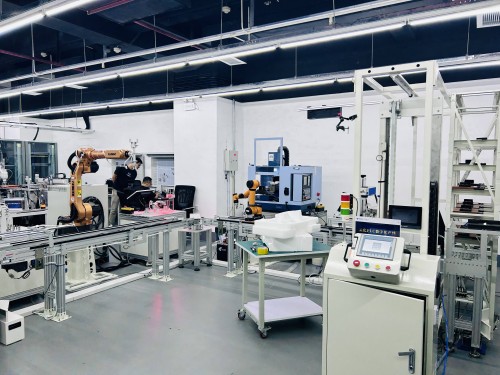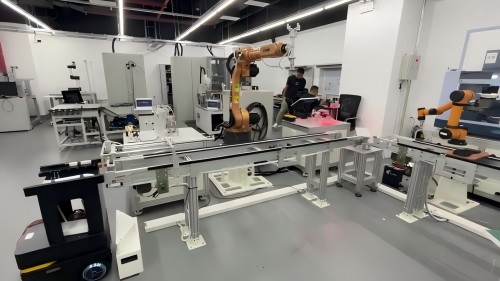Cases
Xendoll has served more than 6,000 users around the world, providing machining equipment and teaching solutions to a large number of vocational and technical colleges and community schools.
Xendoll has served more than 6,000 users around the world, providing machining equipment and teaching solutions to a large number of vocational and technical colleges and community schools.
View More
In the context of education, particularly within the scope of STEAM (Science, Technology, Engineering, Arts, and Mathematics), Industry 4.0 principles offer numerous benefits. By integrating concepts like robotics, intelligent manufacturing, and digital simulation, STEAM education equips students with the practical skills and theoretical knowledge required to thrive in modern industries. This article explores the advantages of integrating Industry 4.0 smart factory systems into STEAM education, as well as specific courses that can be developed around them.

One of the most significant benefits of incorporating Industry 4.0 smart factories into STEAM education is the opportunity for students to engage directly with state-of-the-art technology. With the inclusion of industrial robots, CNC machines, PLC systems, and RFID technologies, students gain hands-on experience with the very systems they will encounter in modern manufacturing environments. This allows for experiential learning that enhances understanding and retention of complex concepts such as automation, systems integration, and digital control.
Through interacting with systems like industrial robots and CNC machines, students can visualize and better grasp concepts like kinematics, control systems, and mechanical design. This practical knowledge fosters not only technical skills but also critical thinking and problem-solving abilities. For example, students might learn how to program a six-axis industrial robot to load and unload materials onto CNC machines, enabling them to experience how machines communicate in real-time and adjust to various input parameters.
Industry 4.0 smart factories are inherently interdisciplinary, combining mechanical engineering, electrical engineering, robotics, computer science, and data analytics. By using these technologies in the classroom, educators can provide a comprehensive learning experience that spans multiple fields of study. Students learn how to operate and program robots, design and troubleshoot mechatronic systems, and integrate various software systems, all of which are vital skills in today’s manufacturing environment.
This cross-disciplinary approach aligns perfectly with the objectives of STEAM education, which emphasizes the interconnection of different disciplines. For instance, a course on “Robotics Technology and Application” may cover aspects of mechanical engineering, programming, and automation, while a course on “CNC Machining Technology” may combine knowledge from mechanical design and computer-aided design (CAD). Students are encouraged to see connections between these subjects and understand how they interact in real-world manufacturing settings.
The job market is increasingly demanding workers who are not only technically proficient but also capable of understanding and working with integrated, automated systems. Industry 4.0 technologies, such as robotics, CNC machining, and PLCs, are at the core of this new industrial landscape. By introducing these concepts to students early, institutions can help prepare them for the evolving workforce, where jobs will require knowledge of both mechanical systems and digital technologies.
For example, students in vocational schools or technical colleges may pursue careers as industrial robot operators, CNC programmers, or automation engineers. Exposure to a smart factory setup allows students to acquire industry-relevant skills, making them more competitive in the job market. Moreover, these students will be equipped with problem-solving and systems thinking skills, both of which are highly valued in any technology-driven field.
Another key advantage of integrating Industry 4.0 systems into STEAM education is the possibility of collaborating with industries. Educational institutions can partner with manufacturers, robotics companies, or software developers to provide students with real-world case studies, internships, or projects. These collaborations expose students to the latest industry trends and best practices, creating a seamless transition from the classroom to the workforce.
For instance, students could be tasked with designing a part for production using CAD/CAM software, programming a CNC machine to manufacture it, and then implementing robotic arms to handle the loading and unloading of materials. Such projects mirror the tasks they would encounter in an actual factory, thus strengthening the connection between theoretical learning and practical application.

The integration of Industry 4.0 smart factory systems into the curriculum offers numerous opportunities to develop specialized courses that are directly aligned with the needs of the modern workforce. Below are three courses that would benefit from the inclusion of smart factory systems:
This course introduces students to the principles of industrial robotics, covering both the theoretical and practical aspects of robotics technology. Students will learn how to program and operate six-axis robotic arms, gaining hands-on experience in loading and unloading materials from CNC machines, as well as other manufacturing tasks such as assembly and packaging. Additionally, students will explore topics such as robot kinematics, motion planning, and safety protocols.
The smart factory setup, with its combination of industrial robots, PLC systems, and CNC machines, provides a perfect environment for students to apply what they learn. By designing tasks and programming robots to automate different processes, students will not only learn the technical skills required to operate robotic systems but also gain insight into the challenges and solutions involved in automating industrial processes.
This course focuses on Computer Numerical Control (CNC) technology, including the operation and programming of CNC lathes and milling machines. Students will learn how to design parts using CAD software, convert those designs into CNC programs, and then operate the CNC machines to produce parts. The course also covers aspects of CNC machine troubleshooting and maintenance, ensuring that students develop a well-rounded understanding of manufacturing processes.
Integrating CNC machines with an industrial robot and a conveyor system allows for a comprehensive learning experience. Students can program a CNC machine to automatically receive and process materials via robotic arms, simulating a real-world, flexible manufacturing system. This setup mirrors the operations of an Industry 4.0 factory, where machines, robots, and software work together seamlessly.
Mechatronics is an interdisciplinary field that combines mechanical engineering, electronics, and computer science to design and develop automated systems. In this course, students will learn how to design, control, and integrate mechatronic systems, focusing on areas such as sensor integration, control systems, and automation.
The smart factory system serves as an ideal platform for this course, as students can observe and engage with various subsystems (e.g., PLCs, robotic arms, CNC machines, RFID systems) that work together in an automated production environment. By designing and modifying different components of the system, students will gain a deeper understanding of how mechatronic systems function and how to optimize their performance for industrial applications.

Integrating Industry 4.0 smart factory systems into STEAM education offers numerous benefits, from hands-on learning and interdisciplinary education to better preparation for future careers in automation and robotics. By incorporating these technologies into the curriculum, educational institutions can provide students with the skills and knowledge necessary to succeed in the modern manufacturing world. The courses designed around Industry 4.0 technologies, such as Robotics Technology and Application, CNC Technology and Manufacturing Systems, and Mechatronics System Design, provide a comprehensive learning experience that equips students with the competencies needed to thrive in a rapidly evolving industry.
As industries continue to embrace digitalization and automation, the role of STEAM education in preparing the next generation of engineers, technicians, and innovators will only become more critical. By adopting Industry 4.0 principles in the classroom, educators can empower students to lead the way in shaping the future of intelligent manufacturing.
Xendoll has served more than 6,000 users around the world, providing machining equipment and teaching solutions to a large number of vocational and technical colleges and community schools.
View More


 Show all our samples
Show all our samples
 Provide you with a free quote
Provide you with a free quote
 Answer all the questions you may have
Answer all the questions you may have
 Guided installation and other options
Guided installation and other options